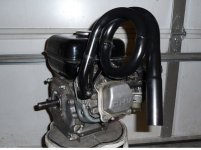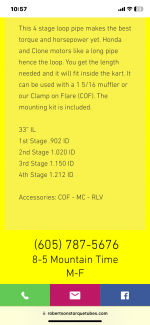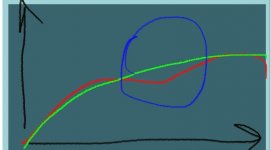A friend of mine has kids who are into go karts, and they've been racing on private tracks, so I got my kart out of storage and started messing with it. So! I've been reading threads here all morning, and thinking about my setup, which led me to looking at carbs, and the info for one carb said not to use it with a weenie pipe. So, I googled weenie pipe, and what I found was a short little exhaust just like the one I am using.
Ok, now my question is, why would someone say not to use a weenie pipe? Too short? Not enough scavenging?
My kart has a 212 hemi predator, billet flywheel and rod, black mamba jr cam, and domed piston which I am going to put the stock flat top back in. And a carb from the next size up engine, which I think I should replace with either the stocker or maybe a flatslide.
Should I keep the weenie pipe or use something longer?
Ok, now my question is, why would someone say not to use a weenie pipe? Too short? Not enough scavenging?
My kart has a 212 hemi predator, billet flywheel and rod, black mamba jr cam, and domed piston which I am going to put the stock flat top back in. And a carb from the next size up engine, which I think I should replace with either the stocker or maybe a flatslide.
Should I keep the weenie pipe or use something longer?





